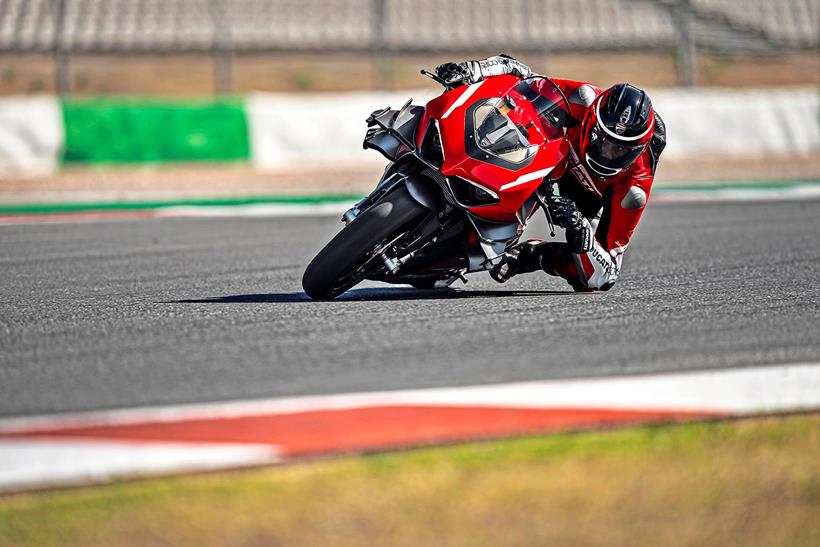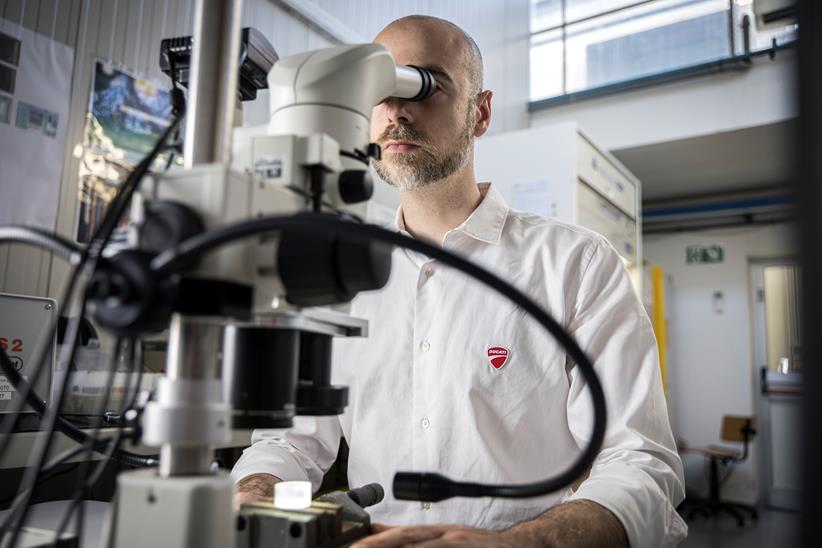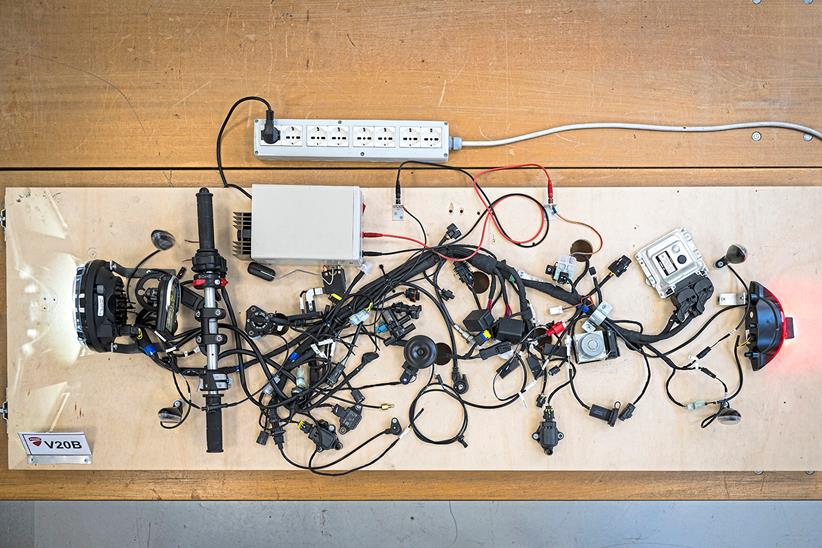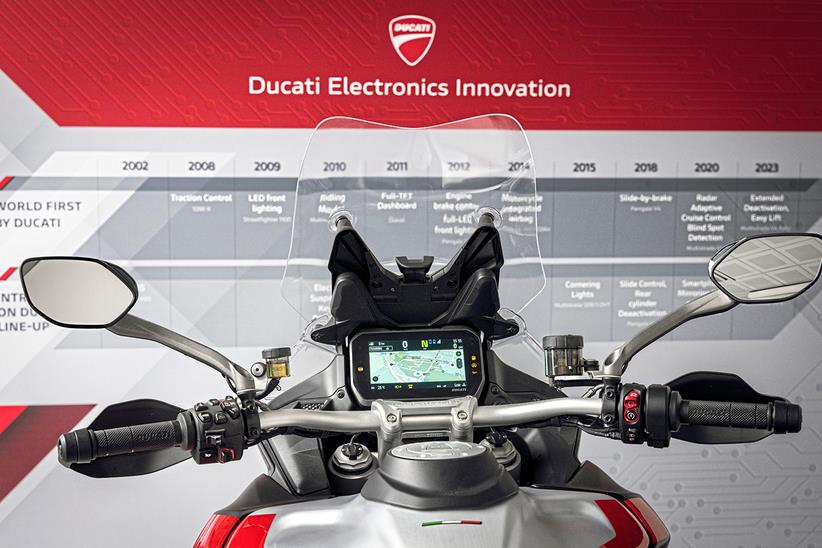MotoGP to Multistradas: Ducati have been leading the way in the tech arms race for years
Biking technology has come a long way in the 15 years that have elapsed since Ducati released their 1098R superbike and introduced riders to the first genuinely effective traction control system for the road.
Since then, the Italian marque has been at the very front of the race in developing new technology; from riding modes to radar adaptive cruise control, the brand have been a powerhouse in innovation with no signs of slowing down.
So how do they do it, and what do they have lined up for the future? We visited Bologna to hear Director of R&D, Vincenzo De Silvio, and Luigi Mauro, Vehicle Testing Department Manager explain all.
“We spend a lot of time innovating, and we actually learn a lot from both our investment in MUNER (the Motorvehicle University of Emilia-Romagana), and our racing department too,” De Silvio told MCN. “As an example, with our Adaptive Cruise Control, the university was involved from the predevelopment stage, which was incredibly helpful.

“That project started six years ago and took a long time, as we had to dial in the transmitting antenna for every possible scenario, and make sure that it didn’t get false positives and negatives. This is hard with new technology, as for example we found that in a tunnel the waves would bounce back and give false readings, which we can’t have. It takes so much time to perfect.”
Alongside universities, the Italian brand rely heavily on their motorsport division, which demands constant innovation to remain at the top.
“Ducati Corse are incredibly important for moving forward, especially as bikes are getting more and more powerful,” he added. “In racing, the easier the bike is to ride, the faster you go; riders can just concentrate on their lines, rather than fighting their motorcycles, and that is the same on the road.”
Never far away from the next milestone, the firm say they are now working on a more advanced rider aid system, with Mauro adding: “We can’t say too much, but we are going to make a new generation of traction control, that will be completely different.
“Our current system is in its third generation and has had many updates thanks to our racing experience, but we realise that the current software is not enough, for what we want. For this, we have decided to make a new version of the software, completely in house using our MotoGP technology which has been incredible. We decided to do this in house, because we cannot hand all this information to another supplier.”

Alongside rider aids, semi-active suspension is another element that Ducati are focusing on heavily, but it’s not an easy job, as Mauro explains. “We need to work on hardware and specifically need more development on the rear shock, but we still don’t have the solution for this.
“Making big modifications on hardware can cause huge issues with the bike and can easily go the wrong way with the feel and response from the machine, and the rider can then lose what we call the contact feeling, which is an integral part of riding a Ducati. Without saying too much we are working hard with this, and hopefully we will have news soon, but we have huge ambitions for utilising semi-active suspension technology.
“Another thing we have been talking about is autonomous and artificial intelligence technology, but it’s too complicated to make it work with a bike,” he went on.

“The rider is active, and the mass of the rider is a huge proportion of the overall weight, and with only two wheels it’s an equilibrium problem.
“Something that we are working on, however, is developing more function for the algorithm, like with our adaptive cruise control and blind spot detection.
“We have also tested and calibrated other systems such as a collision detection and even corner detection, but they are not clean enough to give the best, most perfect result every time.”
Testing Ducatis to the limit
Former racer and factory World Superbike test rider, Ducati’s Lead Test Rider Alessandro Valia talks us through the process of testing, and pushing new systems to the limit…
“We can do lots of simulation, but it’s never the same, especially with electronics. The idea is to translate numbers into feelings, which is tough as engineers don’t do well with sensation… or anything that isn’t data! But by doing that, we aim for predictive and consistent controls that also feel natural, in order to build the rider’s trust.”
“Even once everything looks set from the factory tests, there’s still so much time to make sure everything is as perfect as possible. It will take years to gather everything we need, and we test everywhere – from test tracks, to mountain passes, the autobahn or on all the highways in Europe. It’s important to get the biggest range of data. The more we do, the better the result.”

But, do things ever go wrong? “Yes! I’m thinking back now to when we first tested cornering ABS, and it was so scary, braking with lean angle and being one of the first to try this. It took me so many laps and I had to try lots of different actions: be smooth, panic brake, roll in, everything that a rider might do, so we could calibrate the function. I even had to stab the brake to simulate a panic brake, at angle, mid-corner, where I had to close my eyes. But later on, I did some regressive trail braking, which the software wasn’t expecting, and I ended up crashing in a big way. Following this, Bosch had to update their software to deal with it.”
“I’m proud of what we’ve done and I like to think that we’ve saved lots of crashes and made people faster, too. Such as with braking systems, our Racing front ABS only software is exclusive to Ducati, and is really developed for racing, yet with a little help if you’re going to crash. Even the MotoGP riders such as Jorge Martin and Enea Bastianini use it on their practice bikes!”
Ducati development timeline
- 2008: Traction control is introduced on the 1098R
- 2009: LED lights on a motorcycle, with the Streetfighter
- 2010: Riding modes, on the Multistrada 1200
- 2011: Full TFT dash debuts on their Diavel super-cruiser
- 2012: Engine brake control debuts on the 1199 Panigale
- 2014: First bike with integrated airbag, with the Multistrada 1200 D|Air
- 2018: ‘Slide by brake’ debuts on the Panigale V4
- 2020: Radar Adaptive Cruise Control, with the Multistrada V4
- 2020: Blind spot detection, with the Multistrada V4
- 2023: Extended cylinder deactivation with the Multistrada V4 Rally










